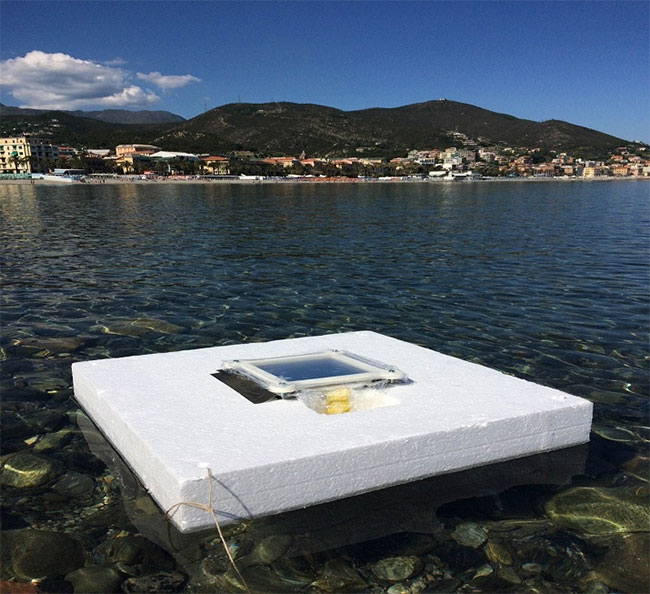Turn seawater into fresh water at a super cheap cost
Using super low cost solar energy, easy to install and repair, saline water desalination equipment into fresh water of Italian engineers can obtain 20 liters of fresh water / day / m 2 of exposure.
According to the Food and Agriculture Organization of the United Nations (FAO), by 2025, nearly 2 billion people in the world lack fresh water for the minimum daily needs. One of the most promising solutions to this problem is to desalinate seawater into fresh water. However, this method consumes 10 to 1000 times more electricity than conventional freshwater methods, such as pumping fresh water from rivers or underground wells.
To overcome this drawback, the engineering team of the Department of Energy, Politecnico di Torino University invented a new device that helps high-seawater desalination with high sustainability and low cost, which is the use of energy. The sun is more efficient. In fact, with an equal amount of solar energy, this technology could help double the amount of freshwater obtained compared to previous technologies. The results of their study were published in the journal Nature Sustainability.
Inspired by green plants to transfer water from the roots to leaves with capillaries and evaporation through leaves, this floating device absorbs seawater by using an inexpensive hollow porous material, thus no need must use expensive and bulky pumps. The resulting seawater is then heated by solar energy, helping to maintain the separation of salt from evaporating water.
"This process can be accelerated by thin membranes separating saltwater and fresh water to avoid being mixed together, similar to some plants living in saltwater environments, such as mangroves ," Matteo Fasano, research team member, said.

Salt water desalination device into fresh water of researchers from Politecnico di Torino University, Italy.
While 'active' seawater desalination technologies often require expensive mechanical parts or electrical equipment and require specialized technicians to undertake the installation and maintenance, the above method is based on spontaneous processes without the support of auxiliary machinery.
Thanks to that, the cost of installing this device very cheap and repairing is also very simple. Therefore, this technology is particularly useful in coastal areas, where people often suffer from a shortage of fresh water and lack strong infrastructure and investment.
'Unlike previous studies focused on how to maximize solar absorption, our research has shifted its focus to more effective management of heat energy. the sun absorbs it. Accordingly, we have achieved record productivity values: 20 liters of drinking water / day / m2 can be obtained. This is due to the 'recycling' of solar heat in the evaporation processes, in accordance with the principle of low effort but high efficiency, "the team said.
After developing the prototype for more than 2 years and experimenting directly in the Ligurian Sea (Italy), engineers affirmed that their technology is well suited to isolated coastal areas that lack fresh water but excess sunshine, especially in developing countries. Moreover, this technology is also particularly suitable in areas affected by storms and floods and isolated due to power outages or dehydration. This device in the future can also be applied to floating food production gardens, especially in overcrowded residential areas.
These device researchers are now looking for potential industrial partners to collaborate to improve equipment, making it more sustainable, more scalable and more versatile.
- 'Saving' innovation for 844 million people worldwide
- 8th graders make devices that turn seawater into fresh water
- The two boys turned seawater into fresh water thanks to the waves
- Lack of water, science race to filter seawater into fresh water
- How to purify fresh water from seawater is simple, cheap and without electricity
- Turning seawater into fresh water for Truong Sa soldiers
- Visit the seawater turning factory into the world's largest freshwater
- Turn seawater into fresh water by solar energy
- 14 seawater converters into fresh water are delivered to DK1 rig
- Collect fresh water from the sea with sunlight
- Pour millions of dollars into saltwater filtration technology in California
- Nanofilm turns salt water into super efficient freshwater
 The US company is about to build a supersonic passenger plane of 6,000km / h
The US company is about to build a supersonic passenger plane of 6,000km / h Japan develops avatar robot as in fiction film
Japan develops avatar robot as in fiction film Australia tested the world's first mango picking robot
Australia tested the world's first mango picking robot America develops technology to separate water from animal waste
America develops technology to separate water from animal waste